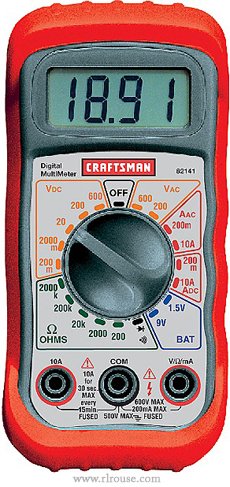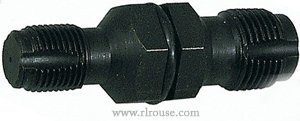 As you probably know by now, there is a new law on the books that bans the sale of incandescent light bulbs. The ban on 100 watt incandescents will go into effect at the end of this year with 40 watt bulbs wrapping up the phase-out in 2014.
As you probably know by now, there is a new law on the books that bans the sale of incandescent light bulbs. The ban on 100 watt incandescents will go into effect at the end of this year with 40 watt bulbs wrapping up the phase-out in 2014.
With this impending ban in mind, many consumers are buying up stockpiles of incandescent bulbs and saving them for later use when they will no longer be available for purchase in stores.
Should you join the merry band of hoarders as well? In my opinion, yes. I gave the much-hyped and grossly over-priced compact fluorescent bulbs a try, and to say the least I was underwhelmed. Besides being just plain ugly, they provide a paltry amount of light and they don’t last anywhere near as long as the claims would have you believe. I have already bought up several dozen incandescent bulbs of various wattages, enough in fact to last me and my wife the rest of our lifetimes in all likelihood.
 If you have spent any time at all driving through residential neighborhoods you have probably noticed that many new houses are being built with metal roofs instead of shingles. In addition to the obvious beauty of modern metal roofing, it also offers a number of other major advantages for the home-builder and remodeler:
If you have spent any time at all driving through residential neighborhoods you have probably noticed that many new houses are being built with metal roofs instead of shingles. In addition to the obvious beauty of modern metal roofing, it also offers a number of other major advantages for the home-builder and remodeler: Spring is quickly approaching, and that means it won’t be long before we’ll be mowing our lawns again. Is your lawnmower ready to “hit the ground running”? Here are a few tips for preparing your mower for the upcoming season:
Spring is quickly approaching, and that means it won’t be long before we’ll be mowing our lawns again. Is your lawnmower ready to “hit the ground running”? Here are a few tips for preparing your mower for the upcoming season: A Digital Multimeter (DMM) is one of the handiest tools you can have in your home or garage. Most people think of a DMM as a “volt meter”, and of course it is. But it is also a whole lot more! Here is a run-down of all the electrical properties that a typical digital multimeter can measure:
A Digital Multimeter (DMM) is one of the handiest tools you can have in your home or garage. Most people think of a DMM as a “volt meter”, and of course it is. But it is also a whole lot more! Here is a run-down of all the electrical properties that a typical digital multimeter can measure: Ever since small engine manufacturers began building their engines out of aluminum, users have been plagued with one common and irritating problem: cross-threaded spark plugs. Unless one is extremely careful to screw the plug into the hole by hand for at least a couple of turns, the chances of getting it cross-threaded are pretty high. If this ends up happening to you, you basically have two choices:
Ever since small engine manufacturers began building their engines out of aluminum, users have been plagued with one common and irritating problem: cross-threaded spark plugs. Unless one is extremely careful to screw the plug into the hole by hand for at least a couple of turns, the chances of getting it cross-threaded are pretty high. If this ends up happening to you, you basically have two choices: